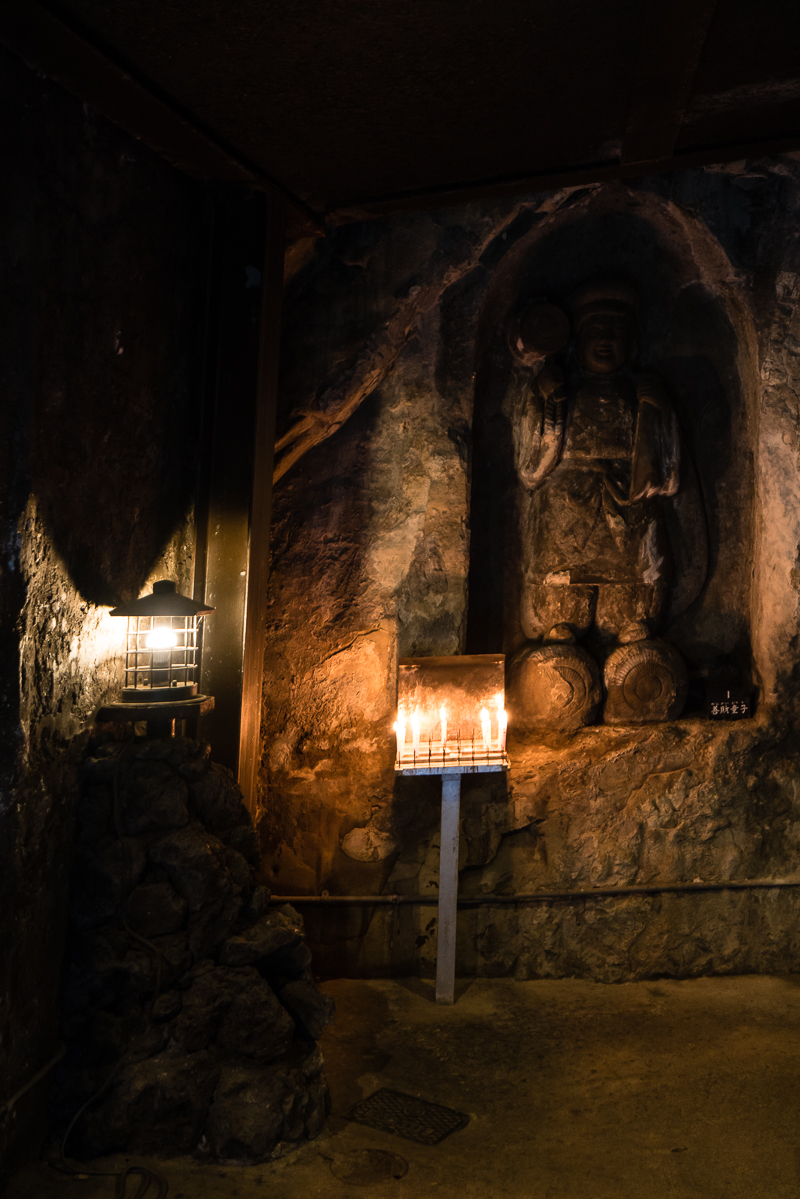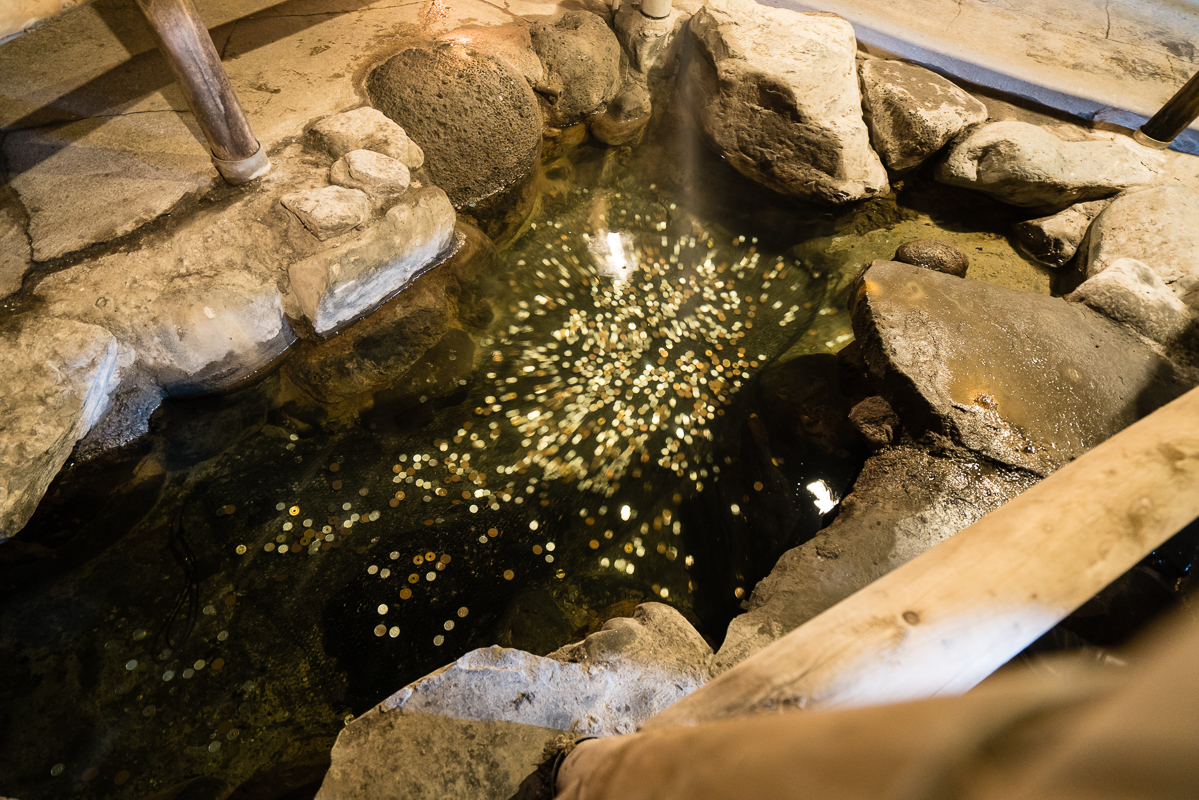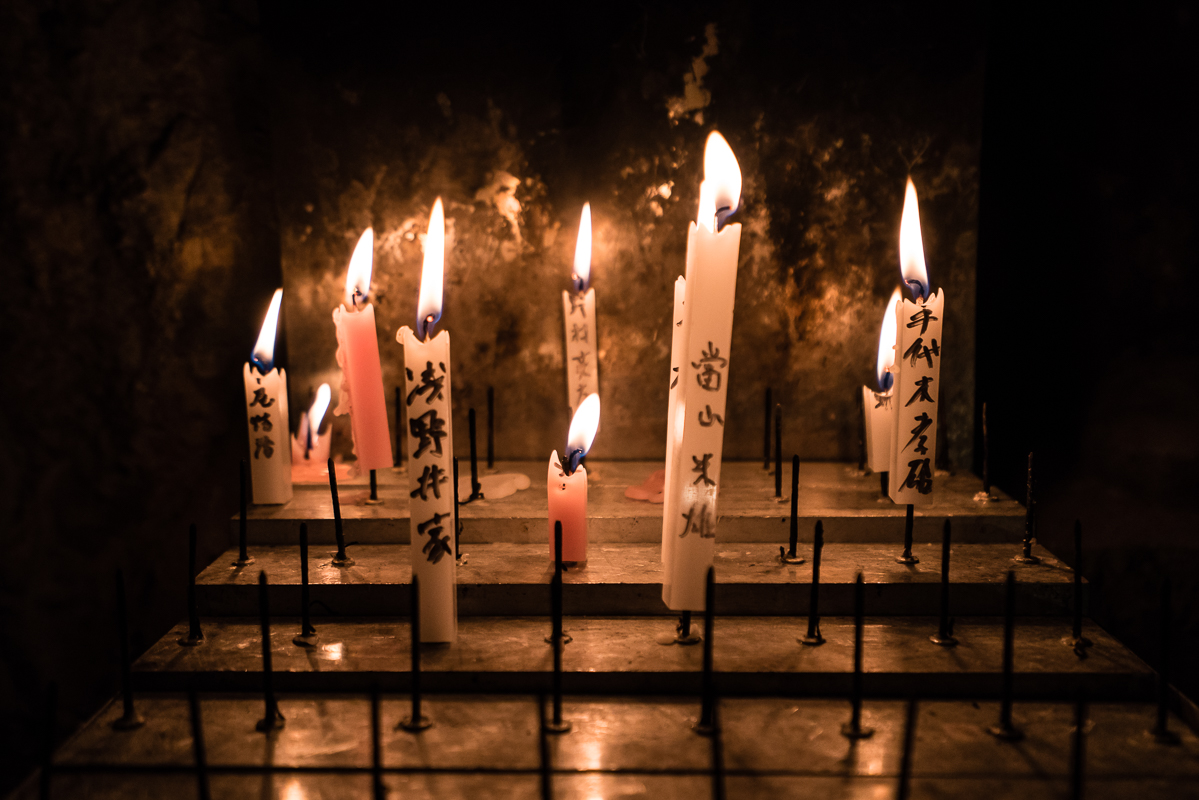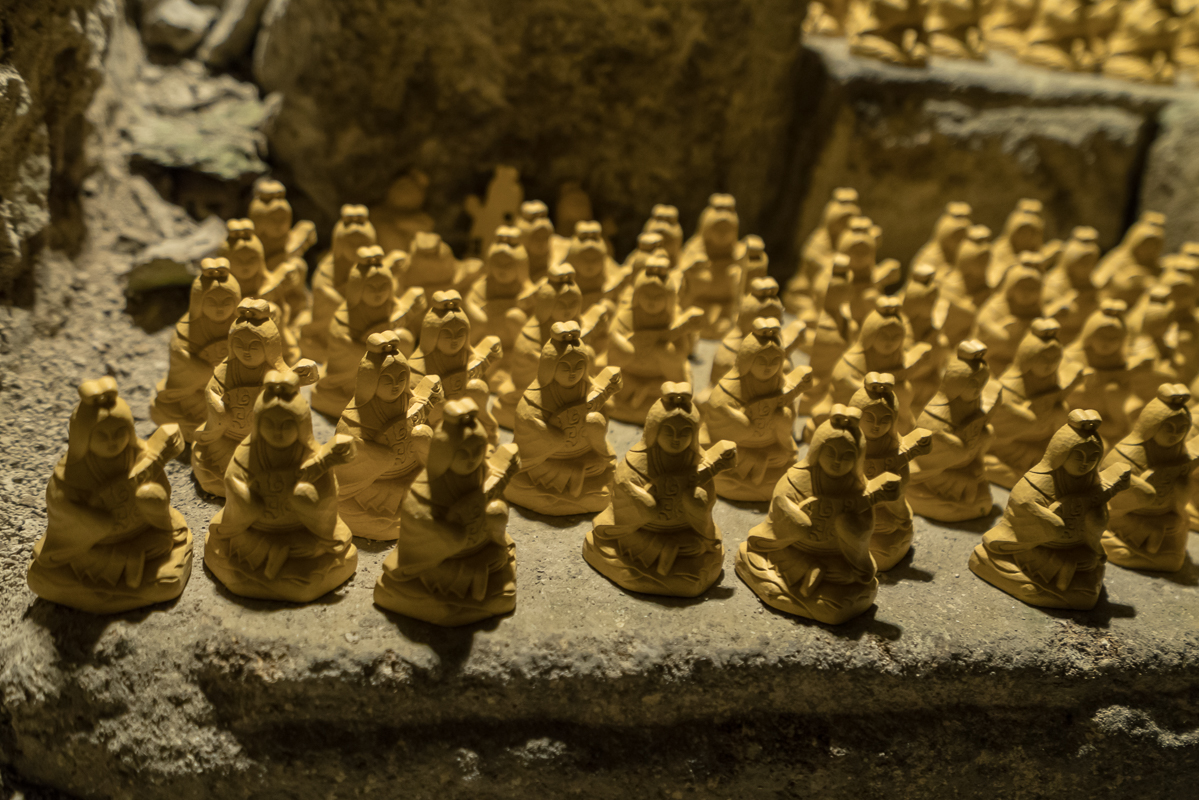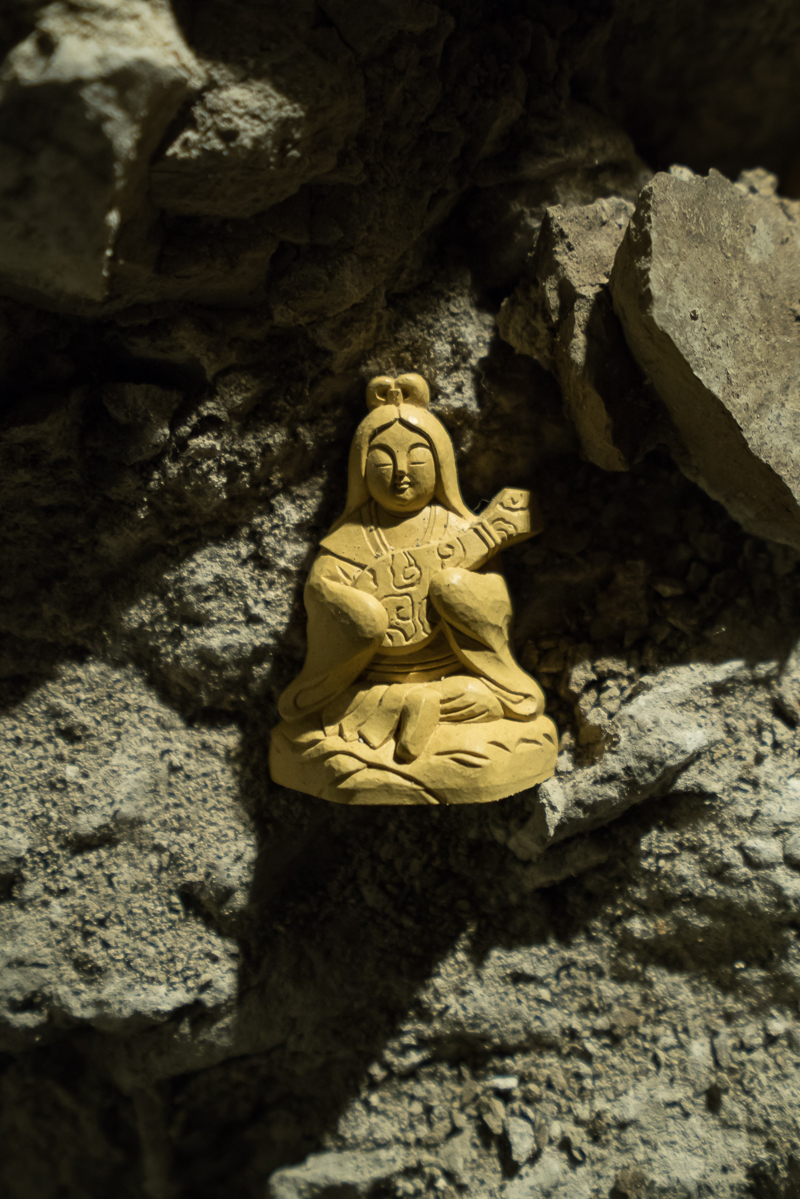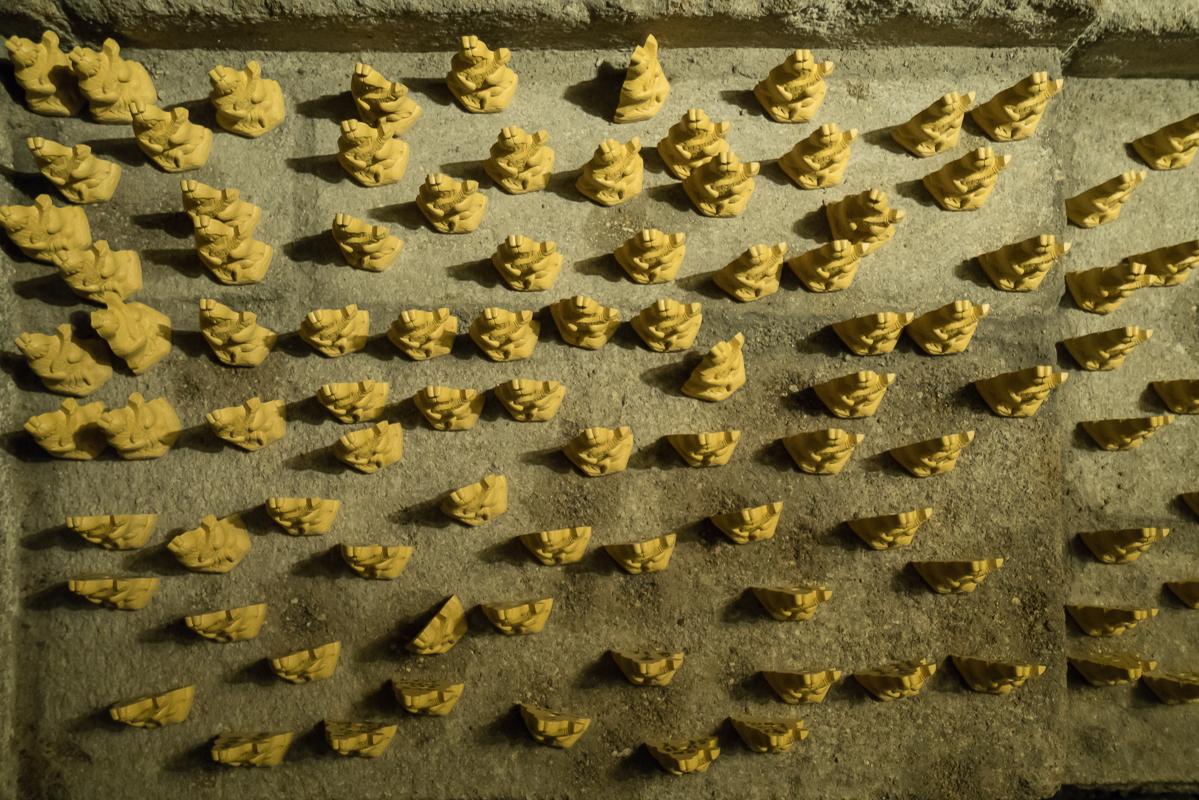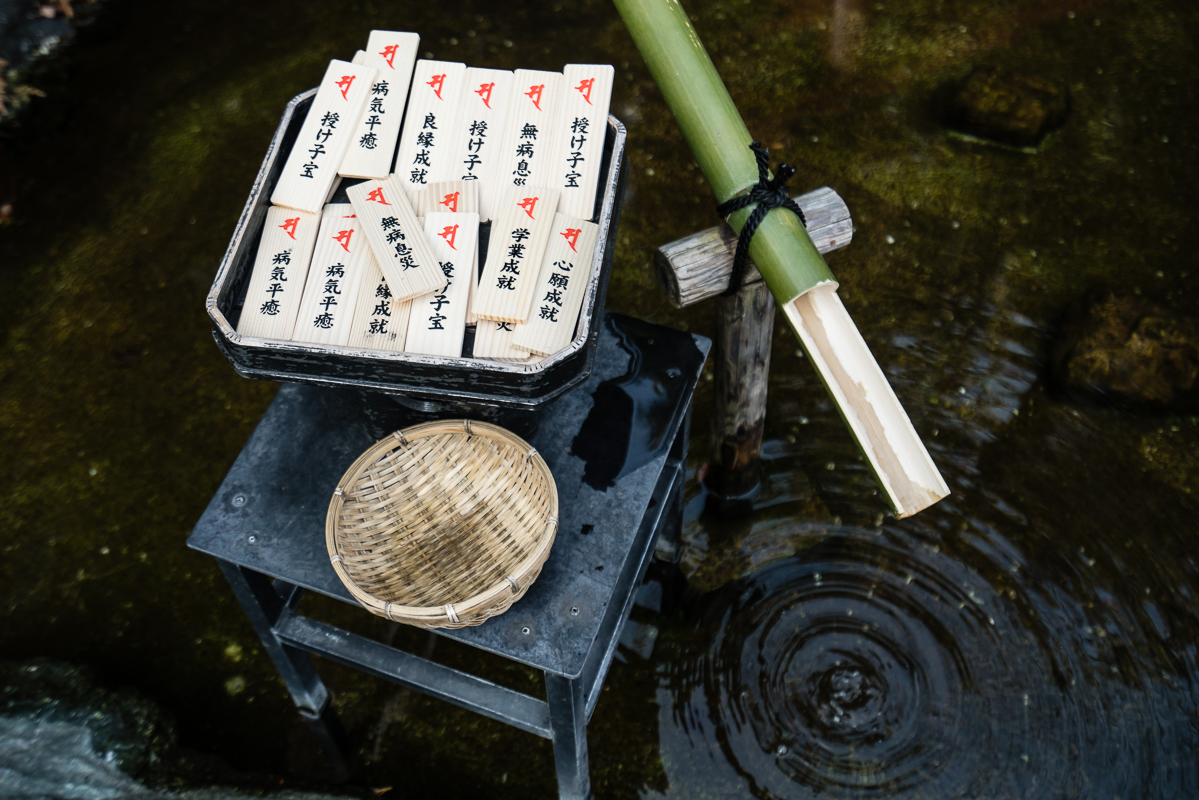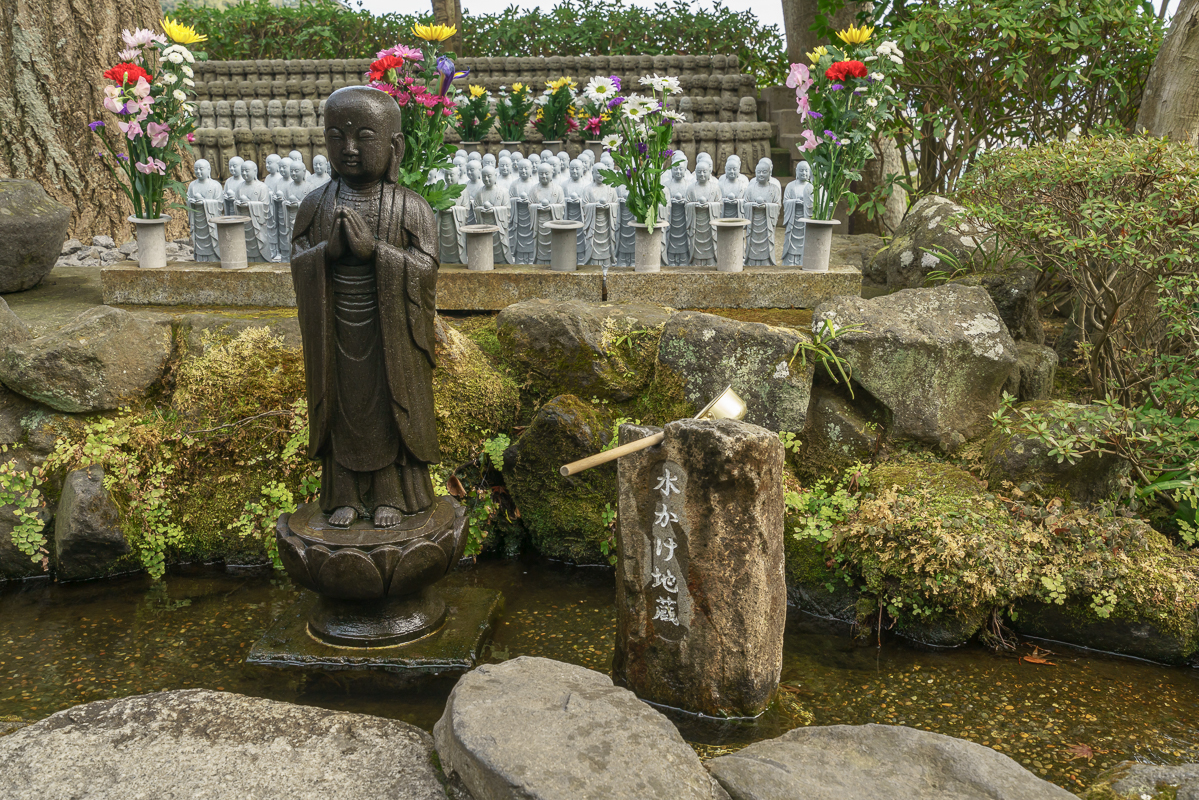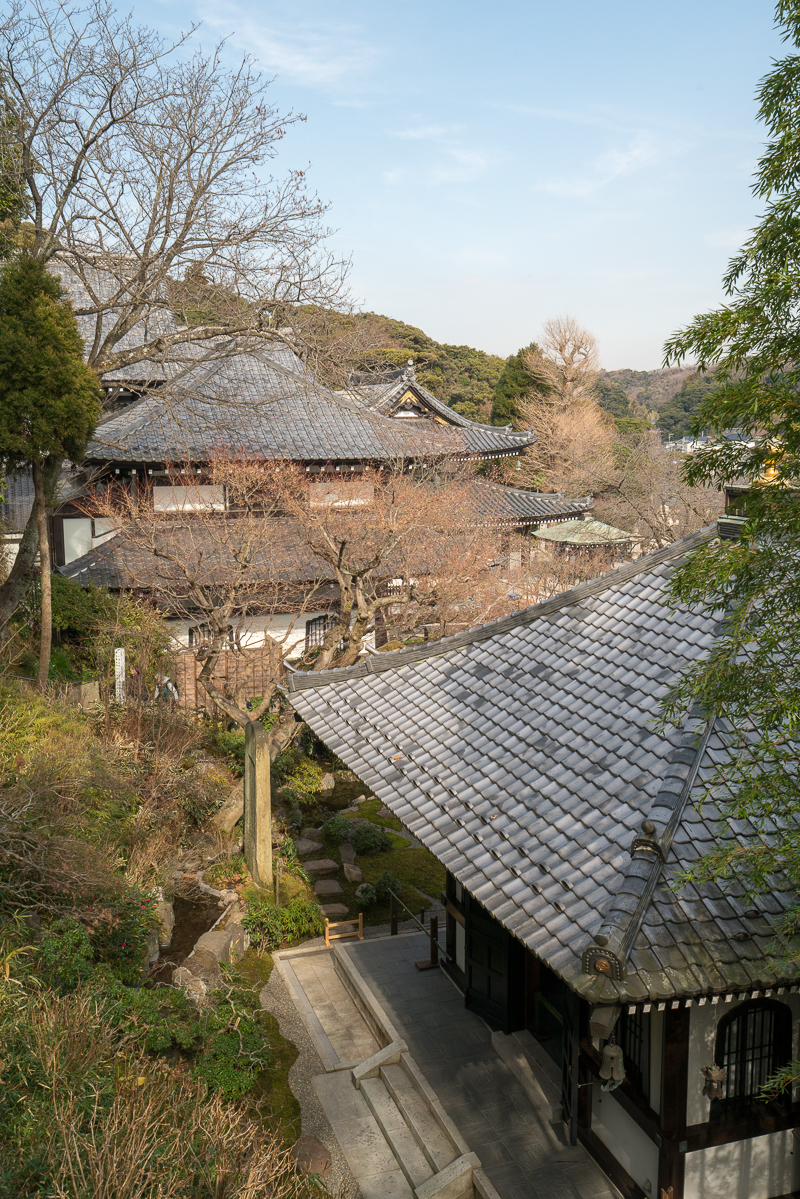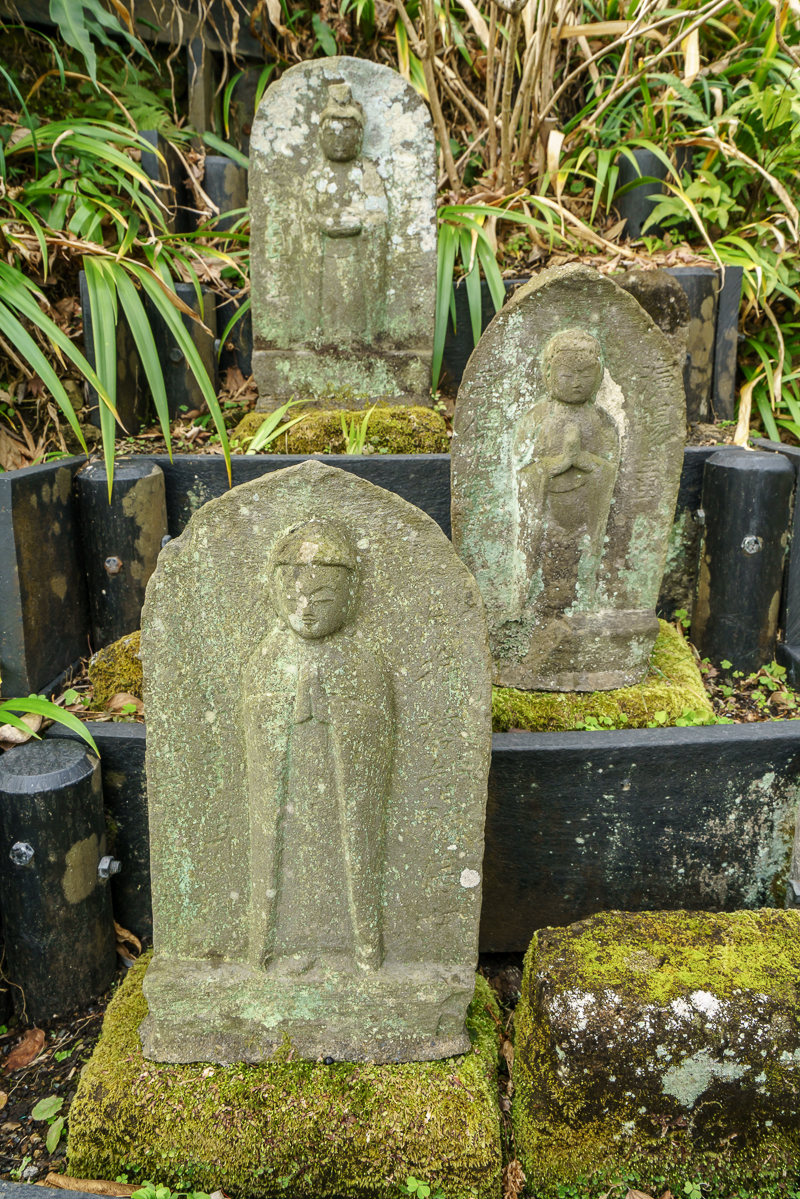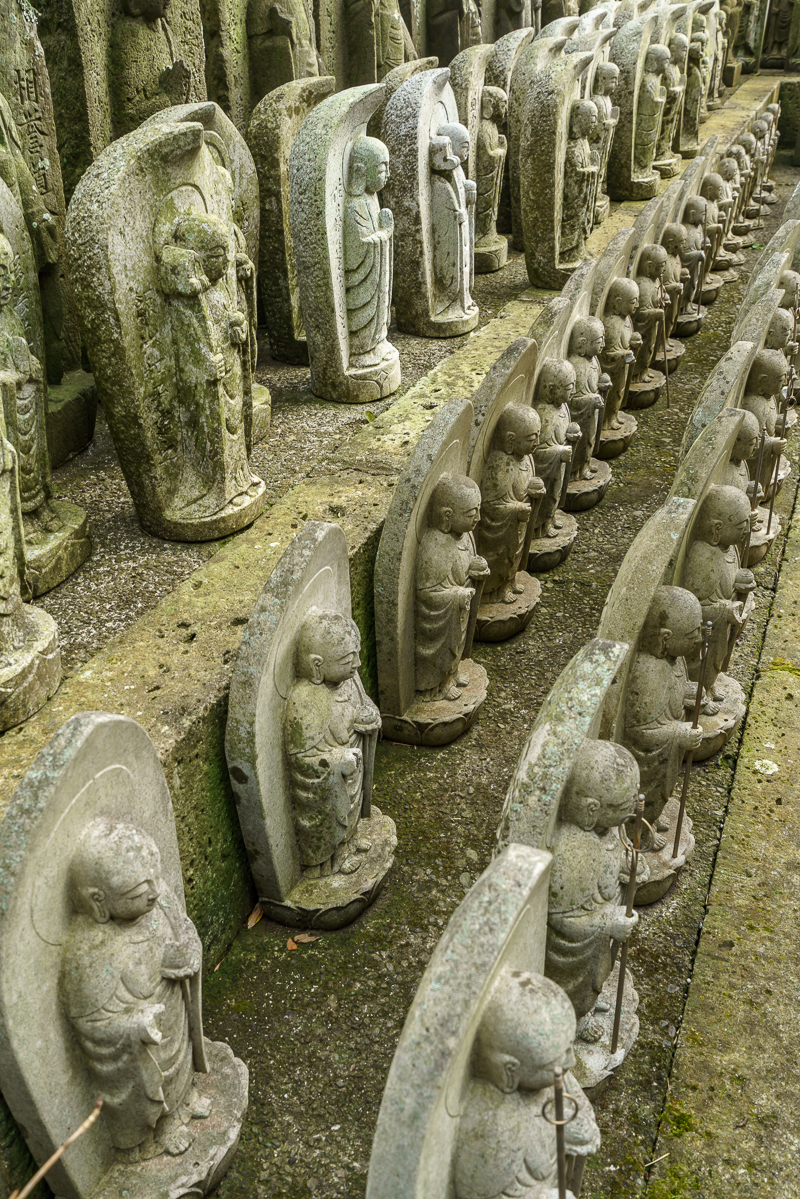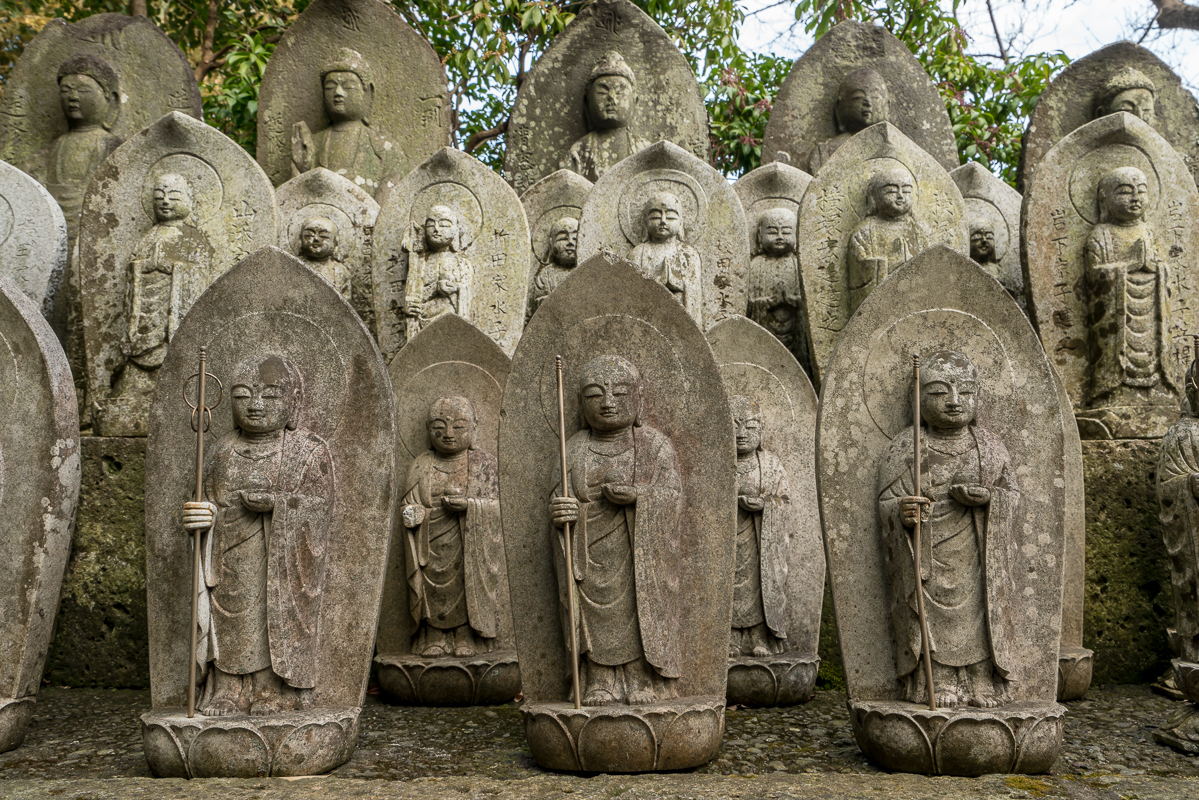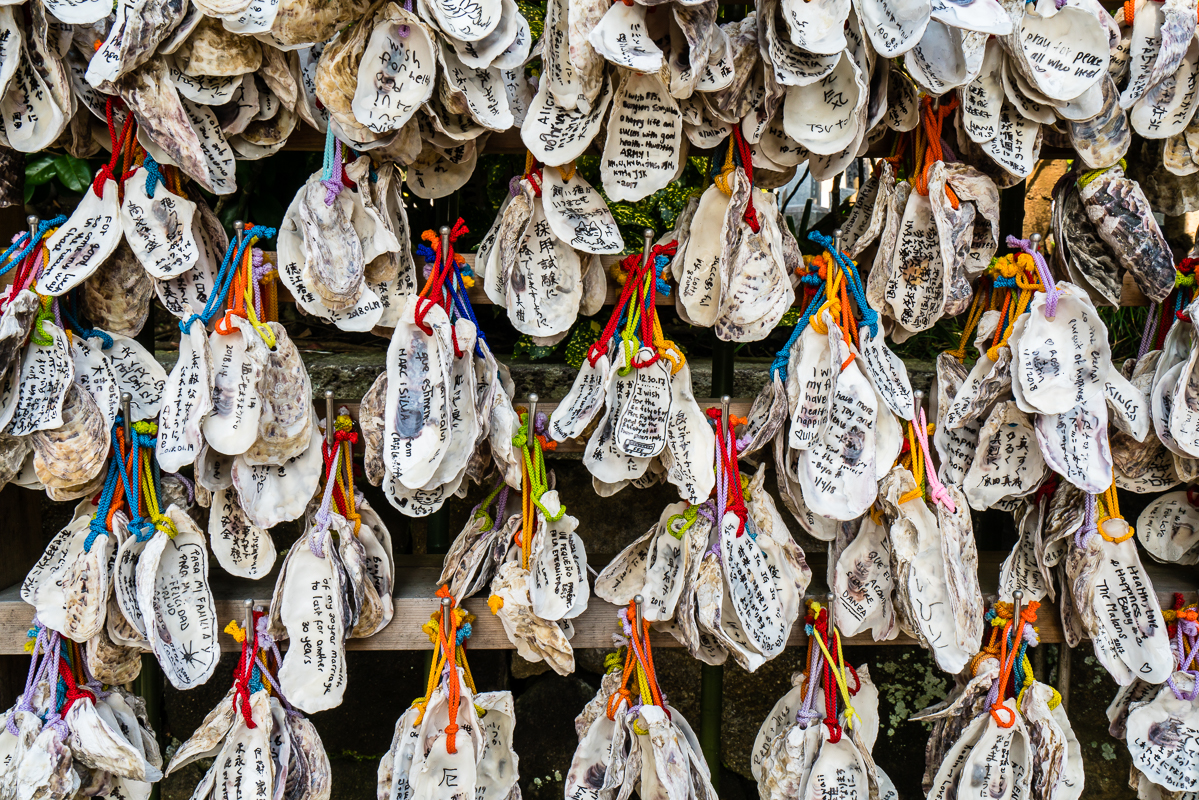After finally making time to visit the giant buddha in Kamakura, we realized that it didn’t actually take as much time as we thought it would. On our walk back, however, we found another temple to explore: the Hase-dera.
The main statue of Kannon is one of the largest wooden statues in Japan, with a height of 9.18 metres (30.1 ft), and is made from camphor wood and gilded in gold. It has 11 heads, each of which represents a different phase in the search for enlightenment.
According to legend, the statue is one of two images of Kannon carved by a monk named Tokudō in 721.[1] The camphor tree was so large, according to legend, that he decided that he could carve two statues with it. One was enshrined in Hase-dera in the city of Nara, Yamato Province, while the other was set adrift in the sea to find the place with which it had a karmic connection. The statue washed ashore on Nagai Beach on the Miura Peninsula near Kamakura in the year 736. The statue was immediately brought to Kamakura where a temple was built to honor it.
The grounds were impressive with the gardens, walking paths, and temples. Apparently the temple is famous for its hydrangeas. Next time we’re here in the summer I’d like to go see that!

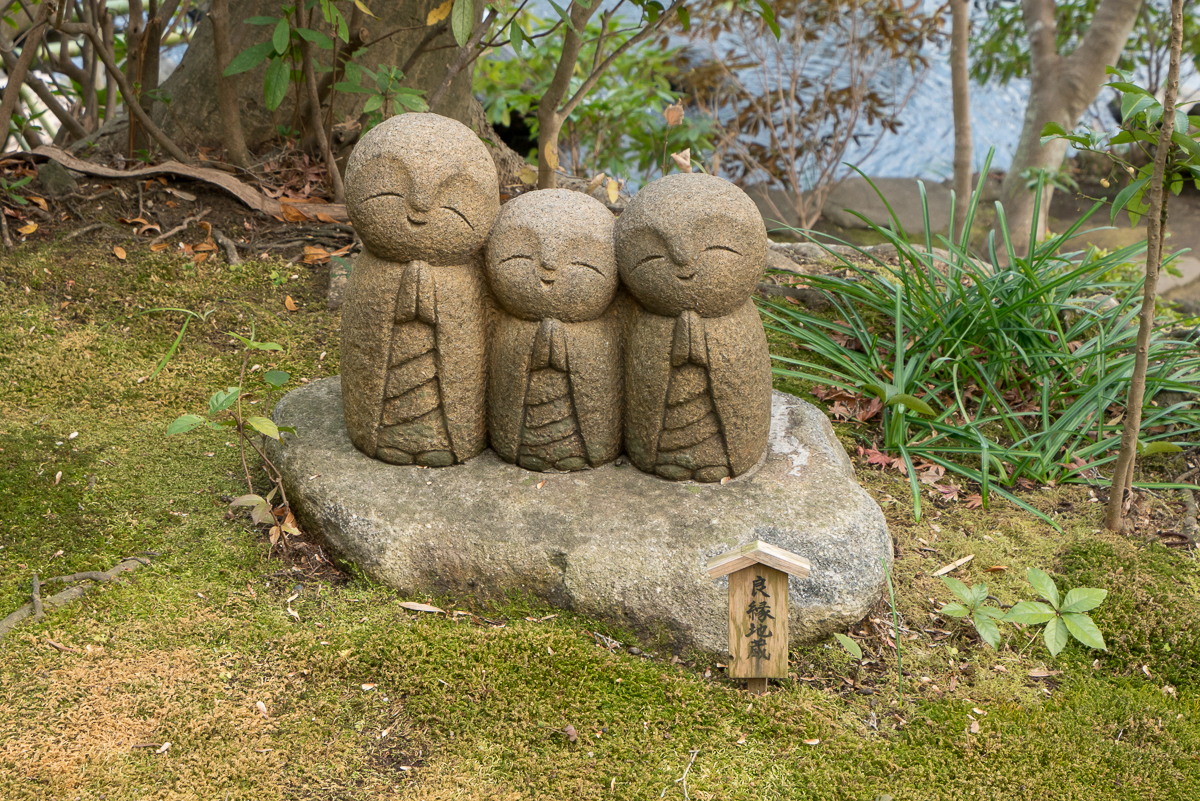


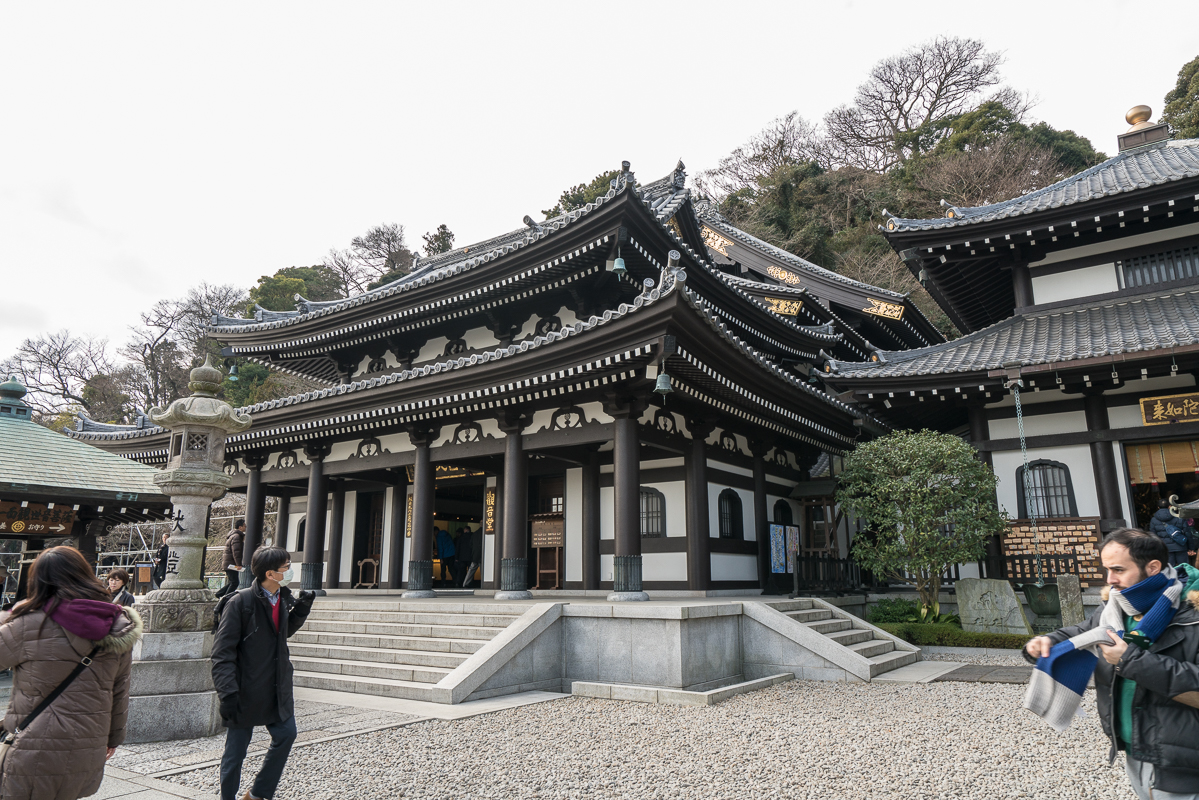
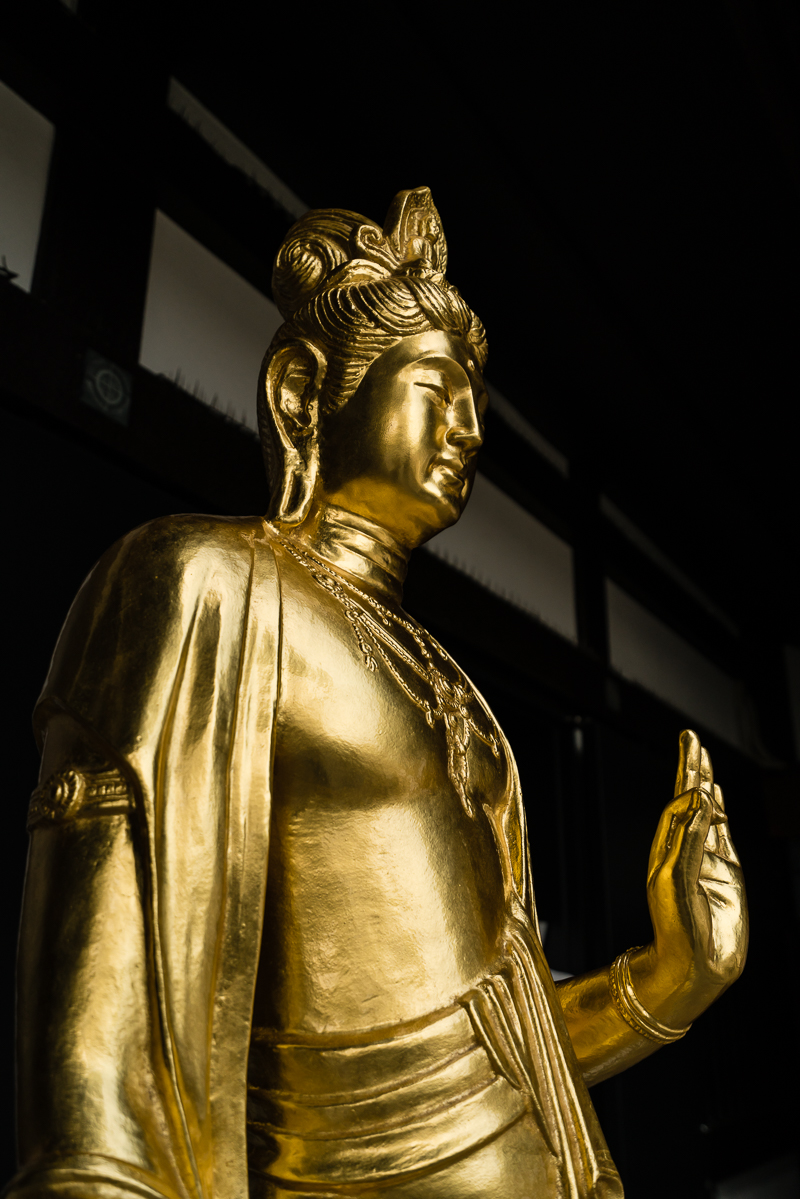
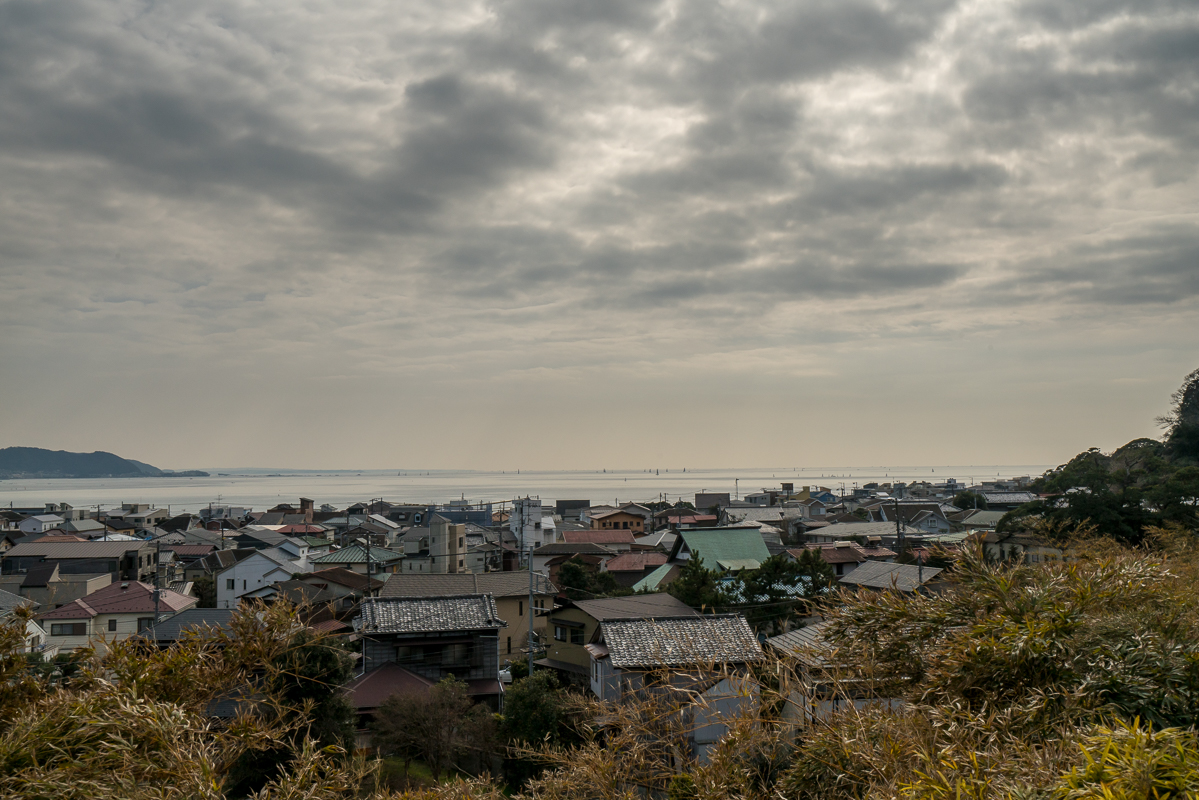
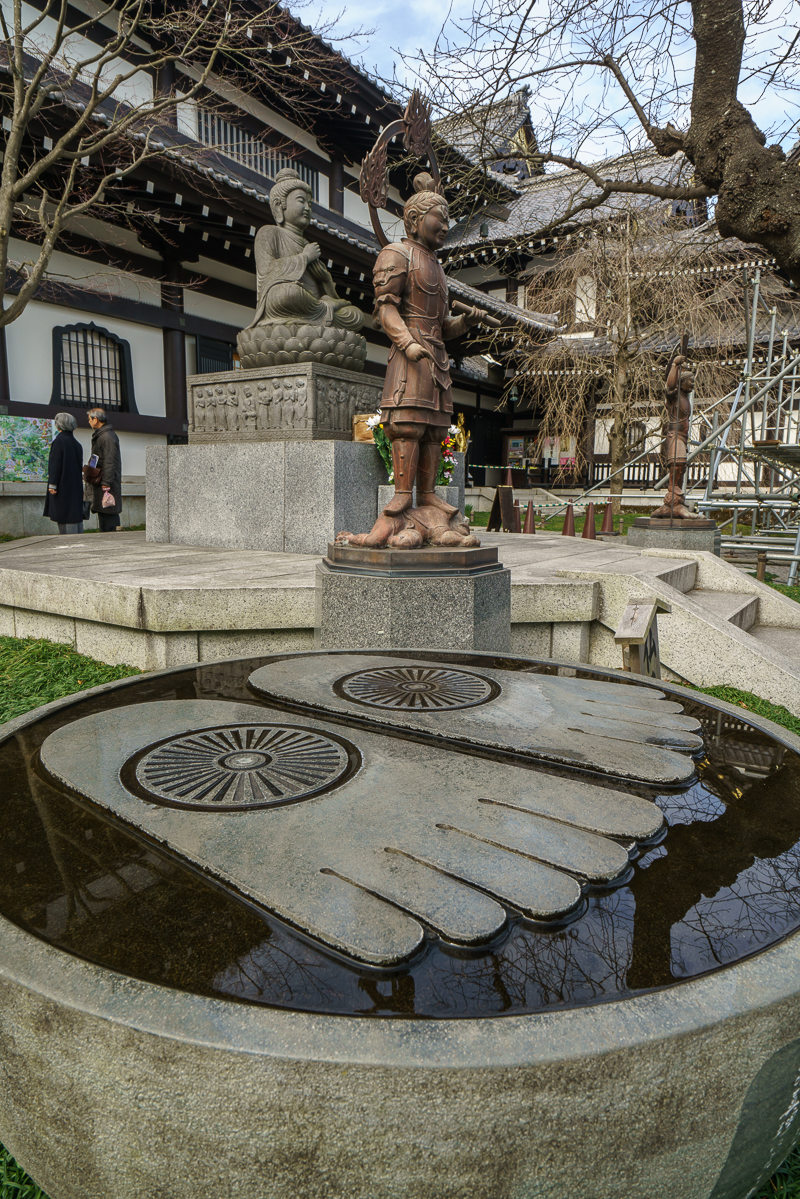
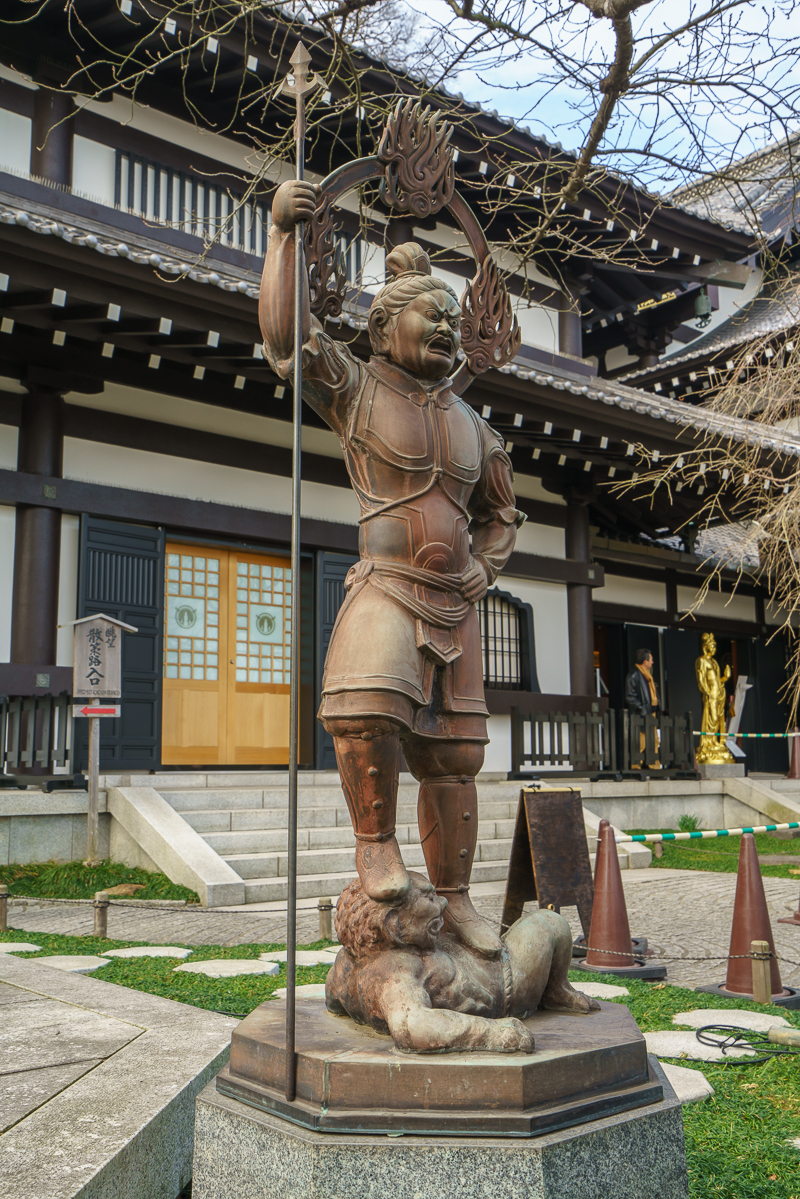

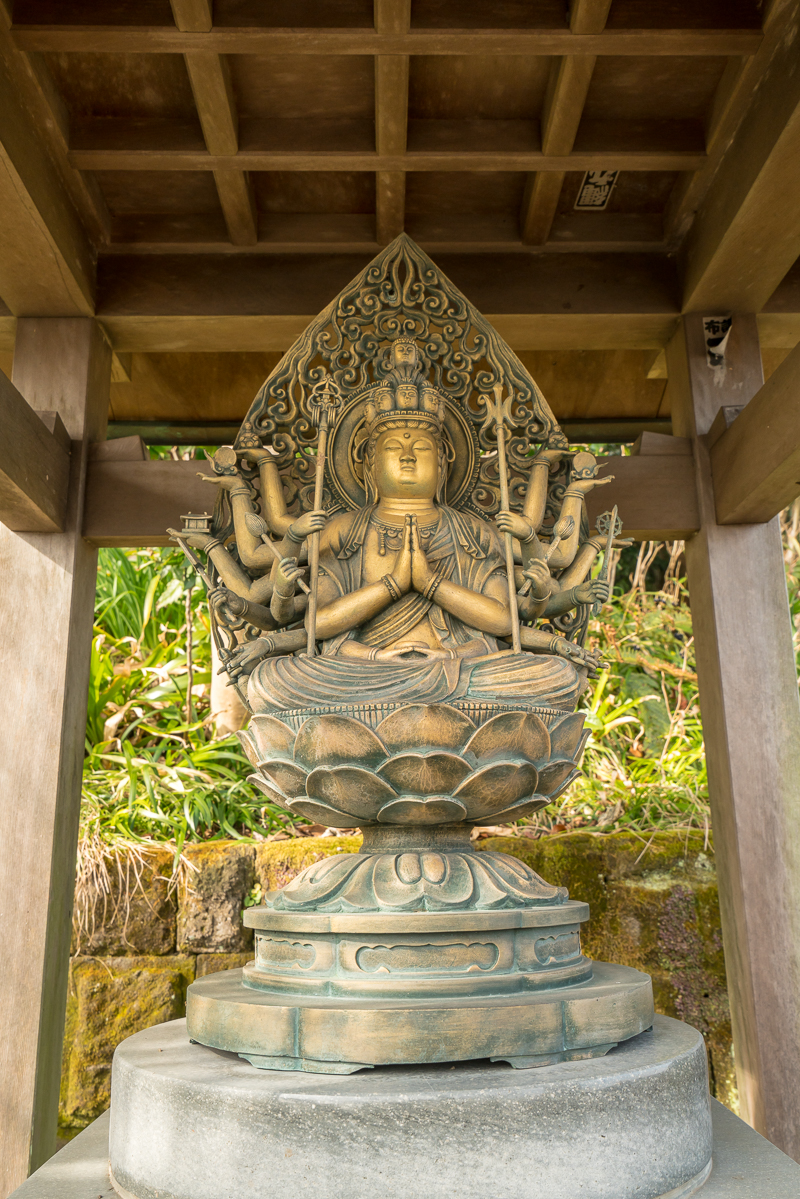
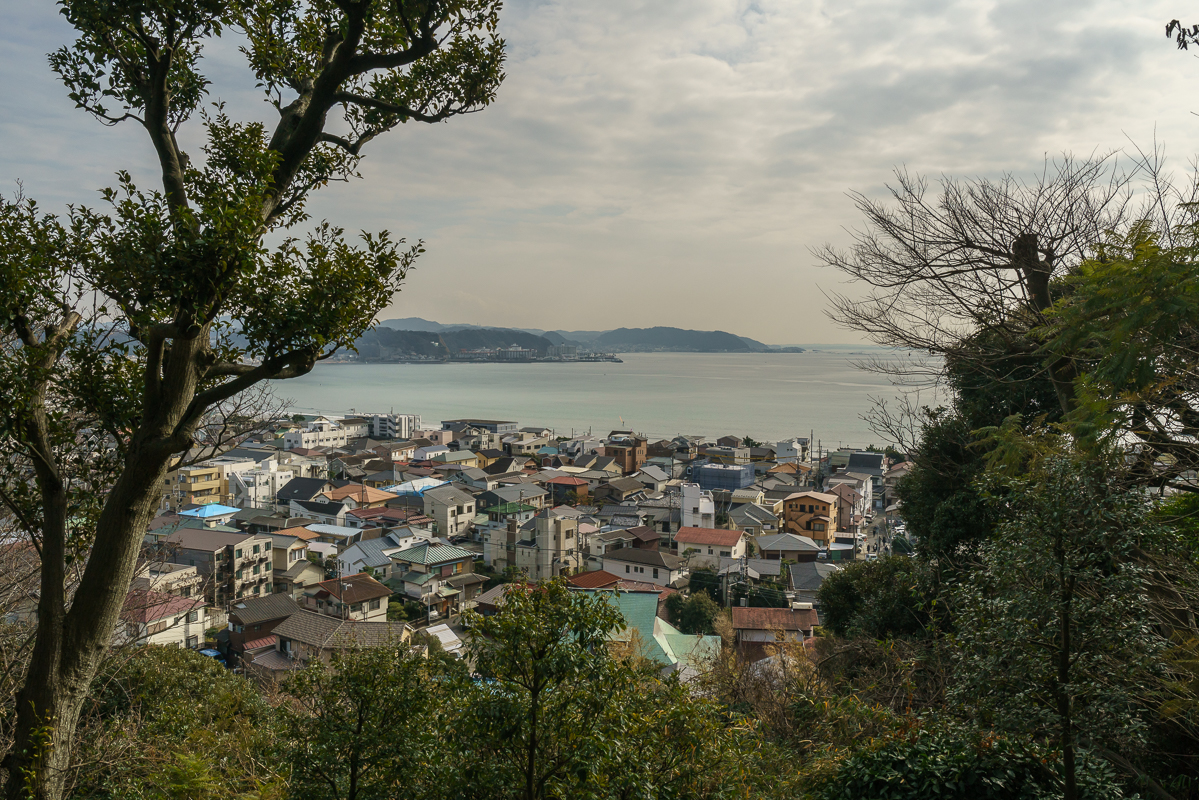
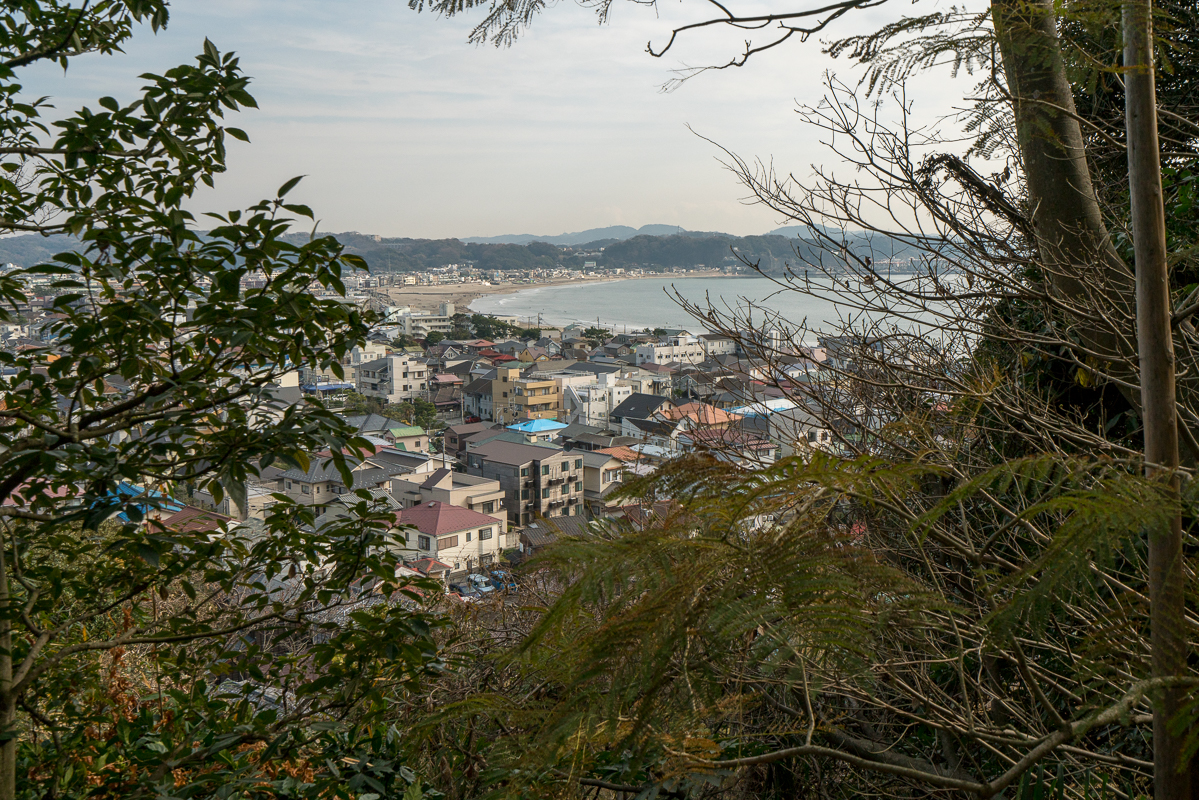
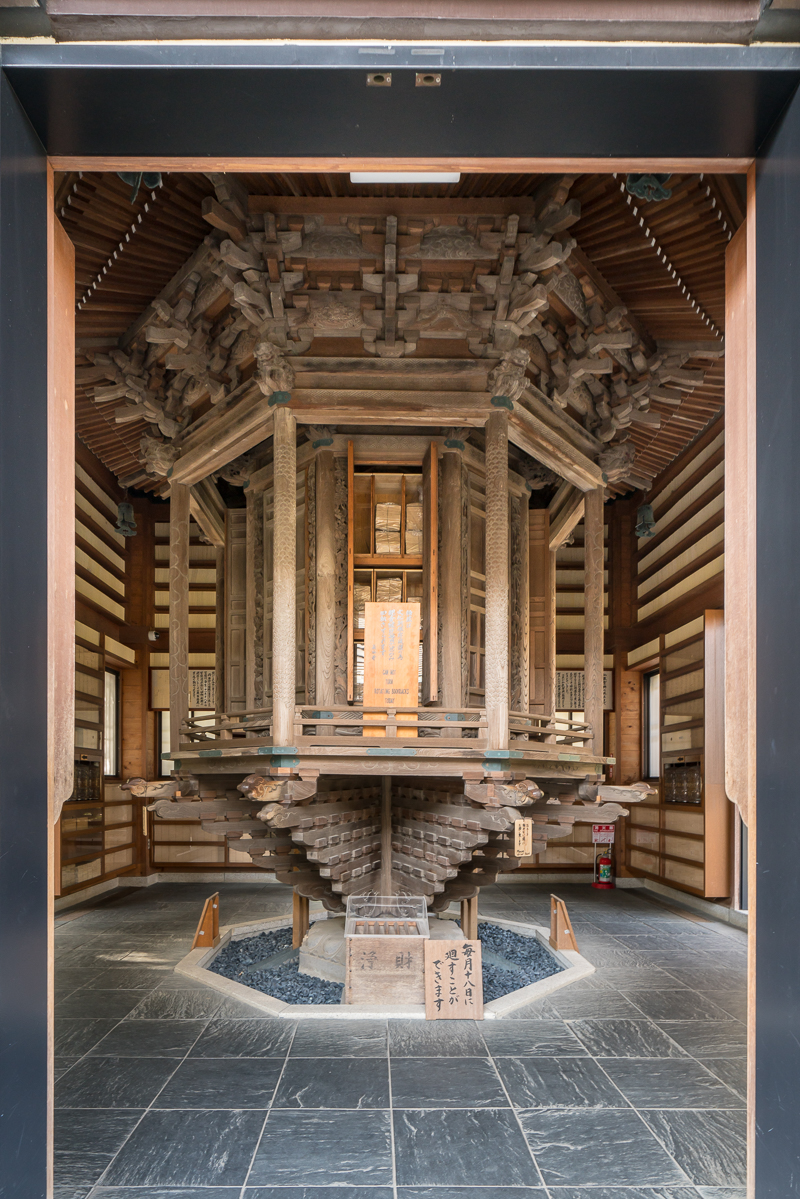
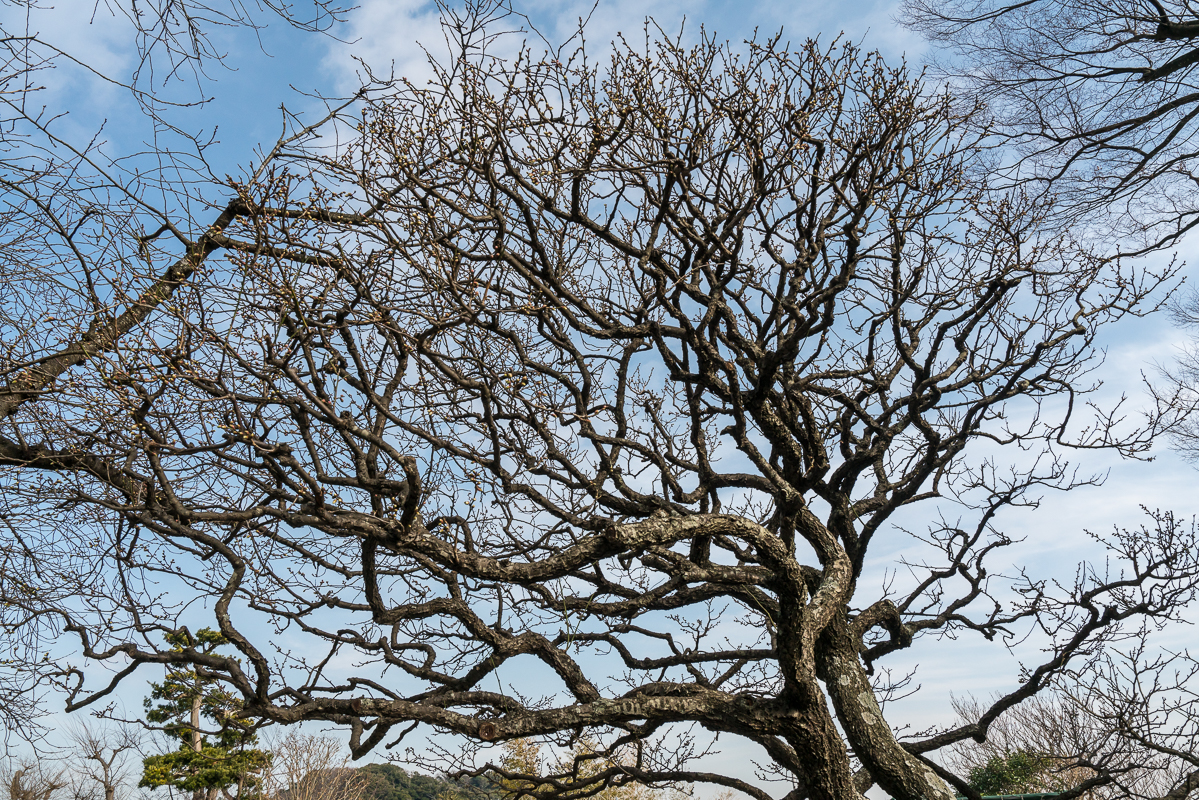
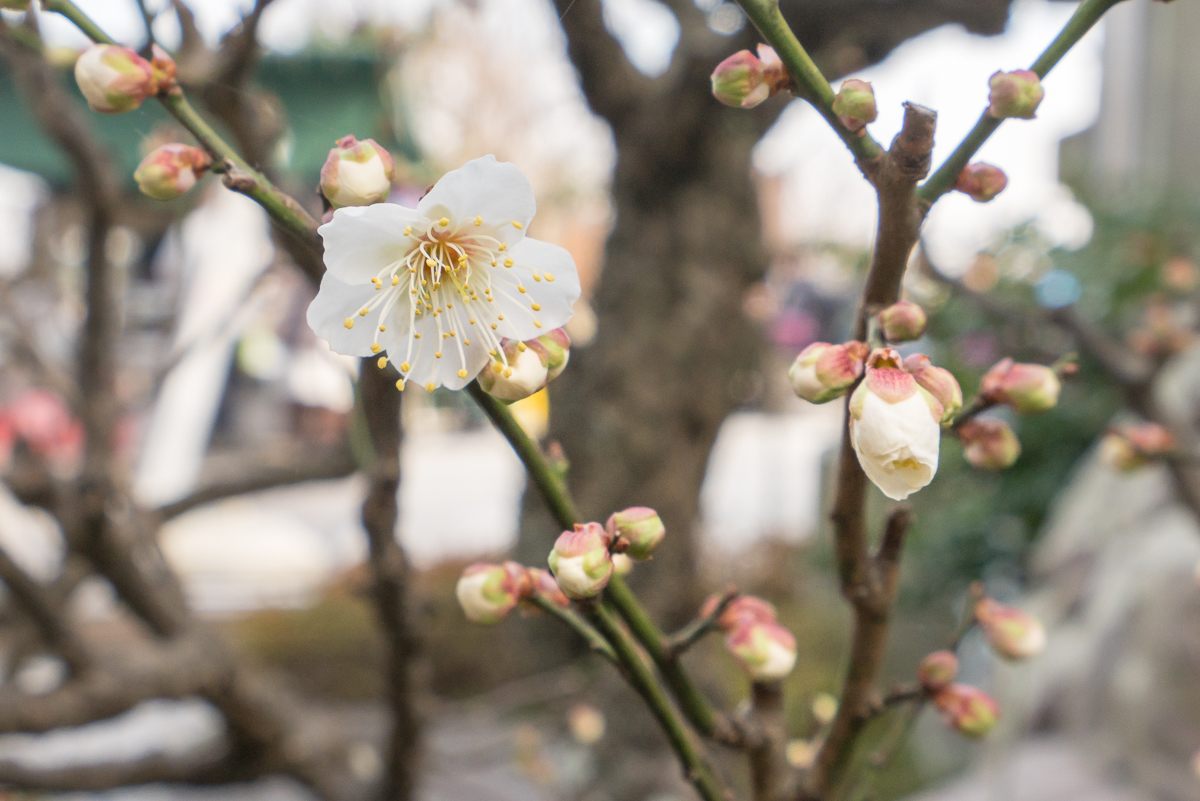
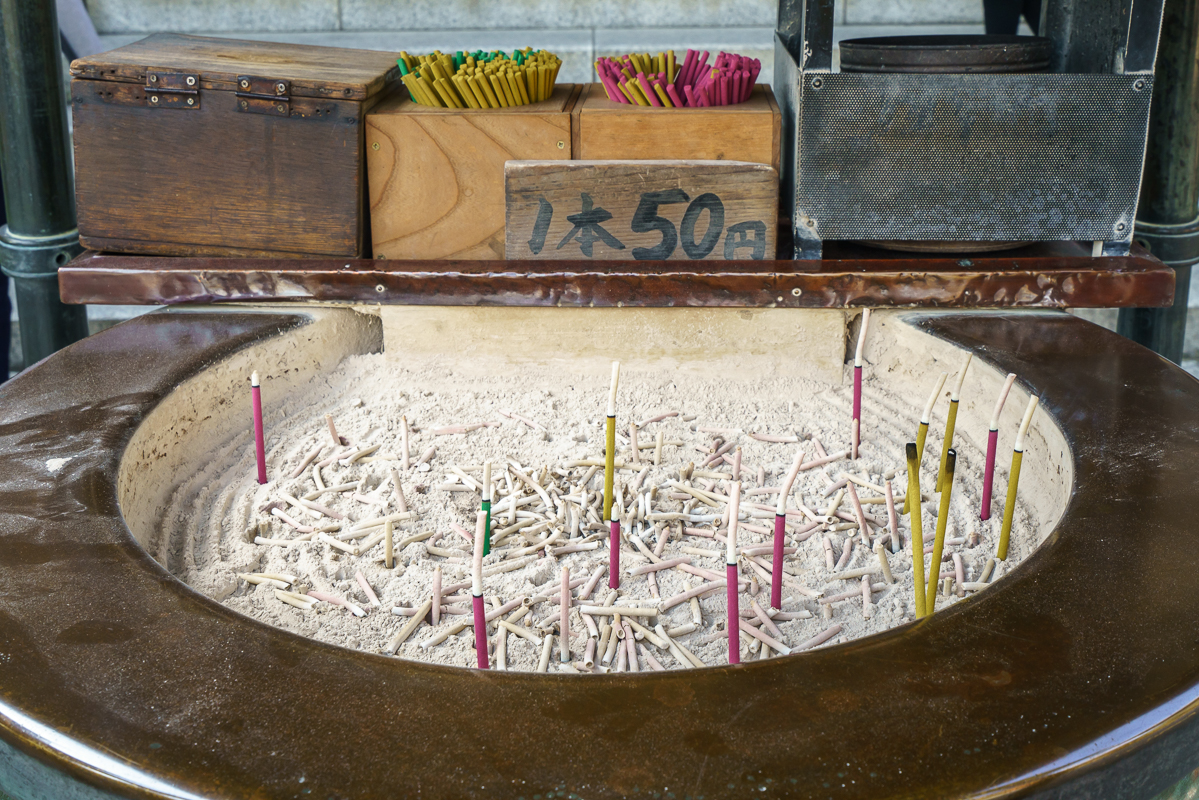
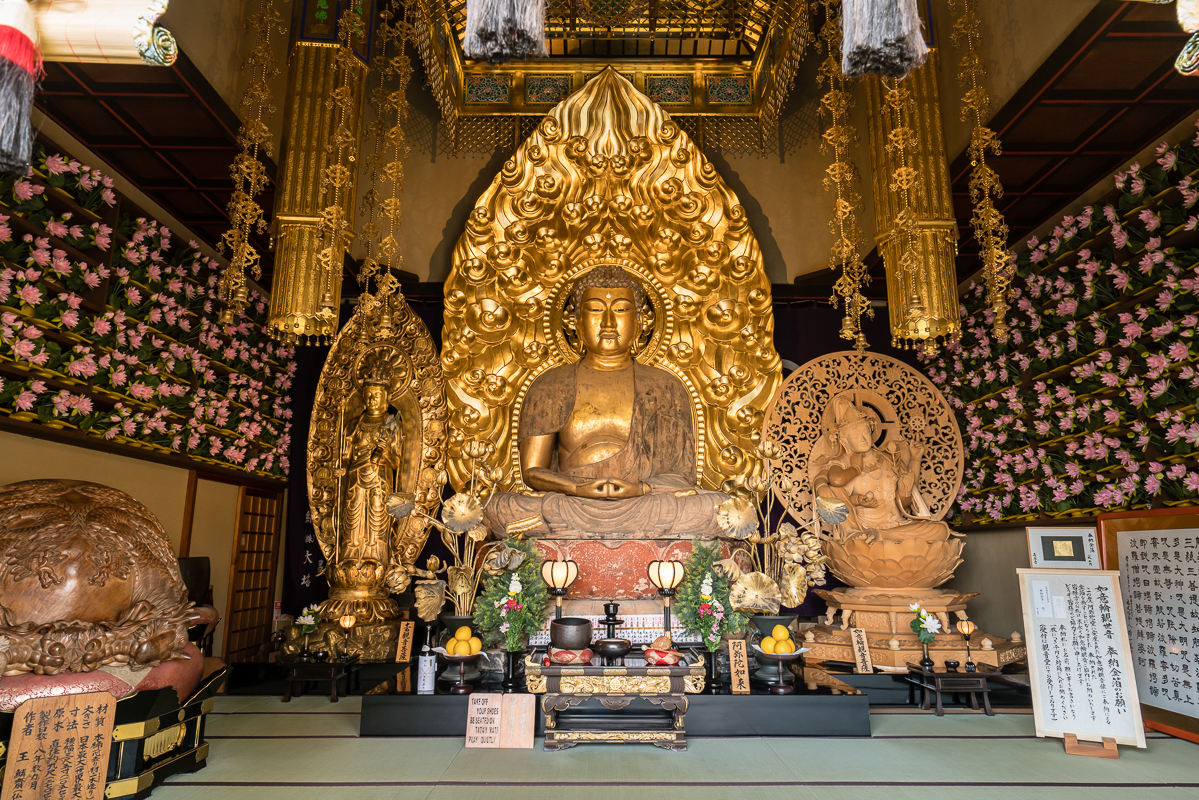
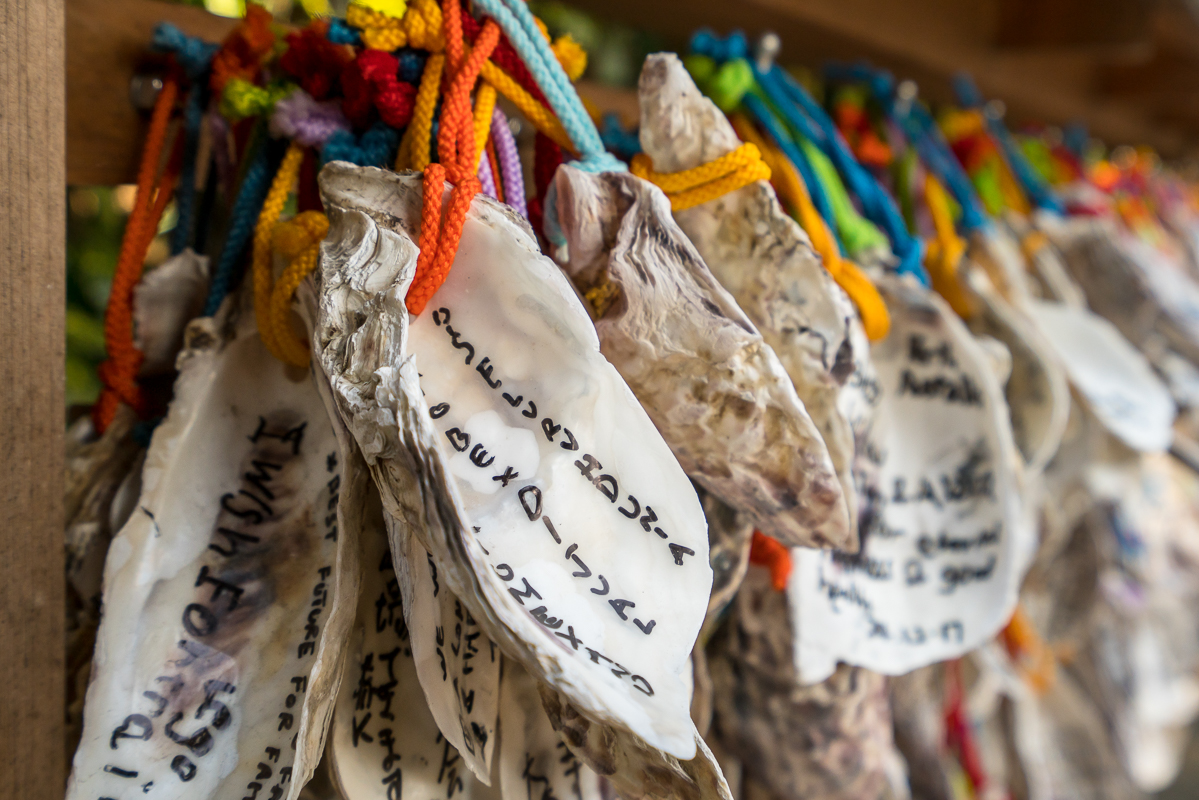




Probably the coolest part of this whole place in my opinion were the caves!
The cave, called benten kutsu (Benzaiten Grotto), contains a long winding tunnel with a low ceiling and various statues and devotionals to Benzaiten, the sea goddess and the only female of the Seven Lucky Gods in Japanese mythology.
As with our poor buddy Austin in the above photo, he was pretty much crawling through the cave!
